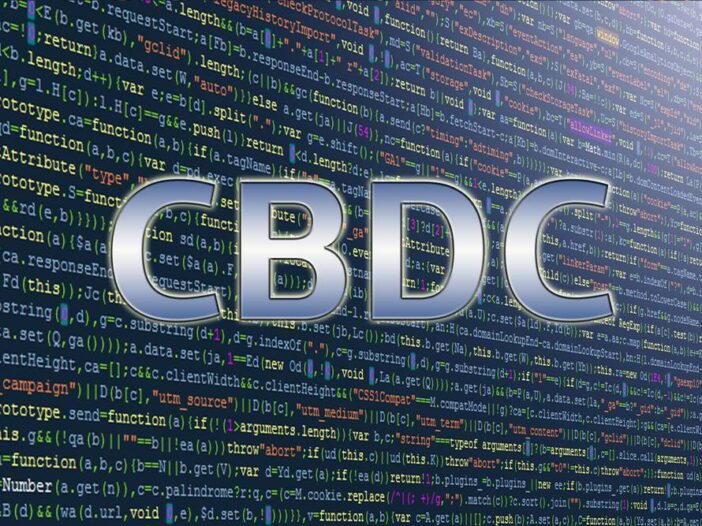The Future of Money Is Up for Grabs
Since 2010, the major global economies have been engaged in a currency war involving repeated competitive devaluations of currencies in order to export deflation, import inflation, promote exports, and create export-related jobs. This is a zero- or even negative-sum game that leads inevitably to trade wars, which began in 2018. These also accomplish nothing unless accompanied by internal infrastructure investment and growth-oriented policies.
Now a new phase that could be called ‘money wars’ has begun. It involves non-government cryptocurrencies competing with government money, and governments embracing new sovereign digital money called central bank digital currencies (CBDCs).
The rise of CBDCs and cryptocurrencies
CBDCs are not really new currencies but are new payment channels for existing currencies. The development of CBDCs enables the true elite agenda — the elimination of cash, confiscation of wealth through negative interest rates (difficult in a system that allows cash), and the perfection of the totalitarian surveillance state.
Cryptocurrencies, which are different from CBDCs, are also gaining wide acceptance. These cannot be analysed generically but must be sorted based on criteria such as anonymity, issuance cap, governance, permissioned versus permissionless systems, transaction speed, and liquidity.
Some cryptocurrencies have better use cases, and are safer and more pragmatic, than others. Bitcoin [BTC] has no utility because it is deflationary by design and therefore unsuitable for use in bond markets, which is the key to reserve currency status. Bitcoin mining contributes materially to global CO2 emissions through electricity consumption. Bitcoin prices are also highly manipulated through the use of fraudulent stablecoins such as Tether.
A new kind of monetary trilemma
The only serious rival to the US dollar as a global reserve currency might be a permissioned blockchain maintained by the International Monetary Fund (IMF) using special drawing rights, or SDRs, as a world CBDC. This challenge to the dollar would be made more potent if the SDR-world CBDC were linked to gold.
Gold is the classic form of money, having performed that role in various ways for over 3,000 years. The issue for gold is whether it can still perform these roles in an environment of digital money. Gold’s future also points to the possibility of a new kind of monetary trilemma in which any form of money (gold, cryptocurrencies, CBDCs, or SDRs) can perhaps only perform two out of three of the classic three-part definition of money — unit of account, store of value, and medium of exchange — but not all three because of the comparative advantage of rival forms of money in one or more of those functions.
Beyond that, cryptocurrencies and CBDCs must be considered in light of Marshall McLuhan’s thesis that the medium is the message (I will explain that thesis in a future edition of the DR). Factors such as price, use case, design features, etc are not the message. They are content, a medium in a medium, and mostly irrelevant. The message is that cryptocurrencies are an extension of human reach and scale, and a cool medium requiring extensive involvement by the user to comprehend a mosaic of information.
Hallucinogenic money
The digital currency medium has a global impact that can be a force for unification, but can also be a source of obsessive behaviour, greed, dysfunction, and social disruption. In that sense, cryptocurrencies can undermine confidence in existing currency systems even without displacing them. Their existence has a hallucinogenic effect. Every affected party sees what he wants to see, and no two participants see the effects in quite the same way.
Over a series of articles in The Daily Reckoning Australia, I will look at these new and old forms of money — gold, CBDCs, SDRs, and cryptocurrencies — in the context of today’s global economy. An economy that is itself immersed in the effects of an electronic technological revolution and the third worst pandemic in 650 years. I’ll look at each form of money separately, including new applications like digital gold and new combinations such as gold-backed SDRs.
Money moves too
The critical question is not whether one form of money may prevail over the others, although that is crucial to understand, but what impact any of these forms of money could have on investor portfolios if it either emerged triumphant or sank beneath the waves of electronic competition.
Investors tend to think of their portfolios as consisting of asset classes such as stocks, bonds, real estate, or commodities. They forget that those assets are valued in currencies. Extreme changes in currency valuations can have as much impact on portfolio values for better or worse as the fundamentals of the assets themselves.
My goal is to prepare you for developments in the future of money so you can preserve wealth and prosper, not just through asset selection, but through selection of the proper currency in which to buy and sell assets and hold cash. There’s a lot to unpack. One thing we can be sure of is that the future of money will not resemble the past.
Stay tuned for my next DR edition next Wednesday.
Regards,
 |
Jim Rickards,
Strategist, The Daily Reckoning Australia
PS: This content was originally published by Strategic Intelligence Australia, a financial advisory newsletter designed to help you protect your wealth and potentially profit from unseen world events. Learn more here.

